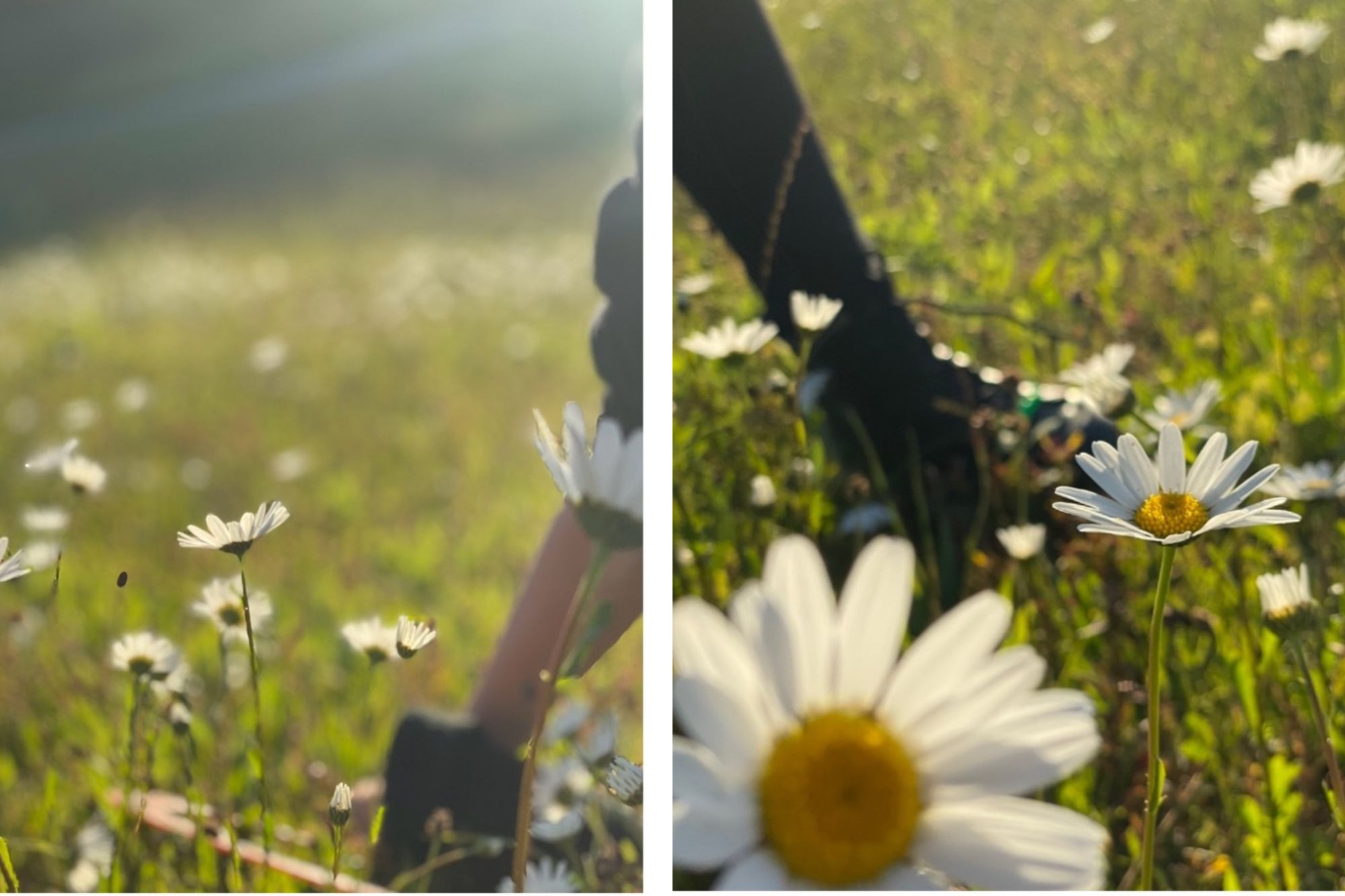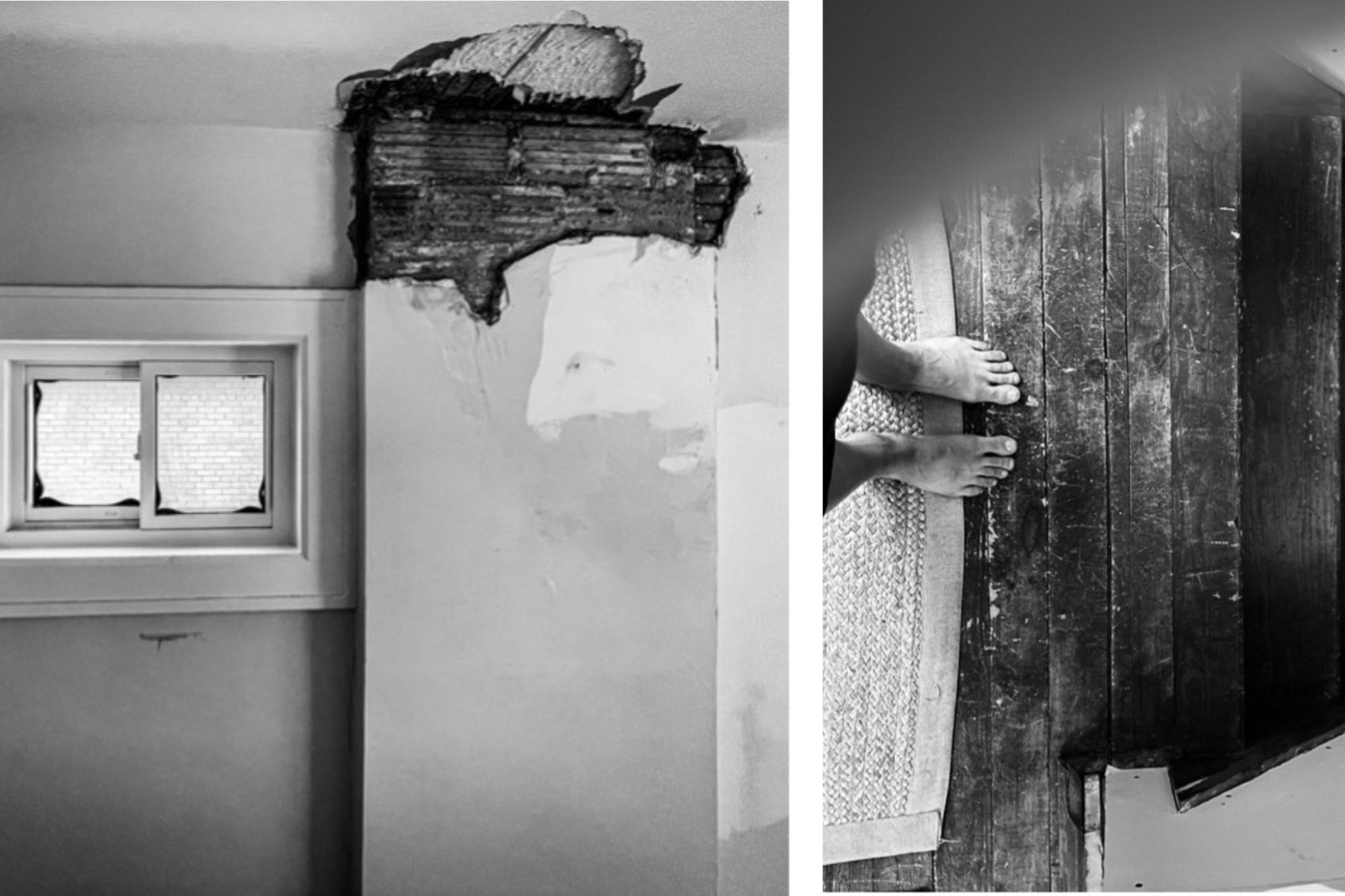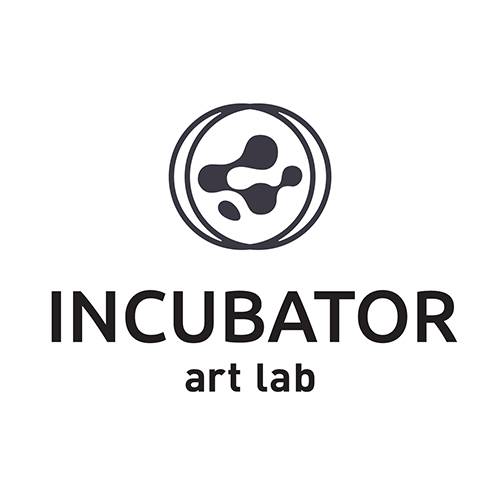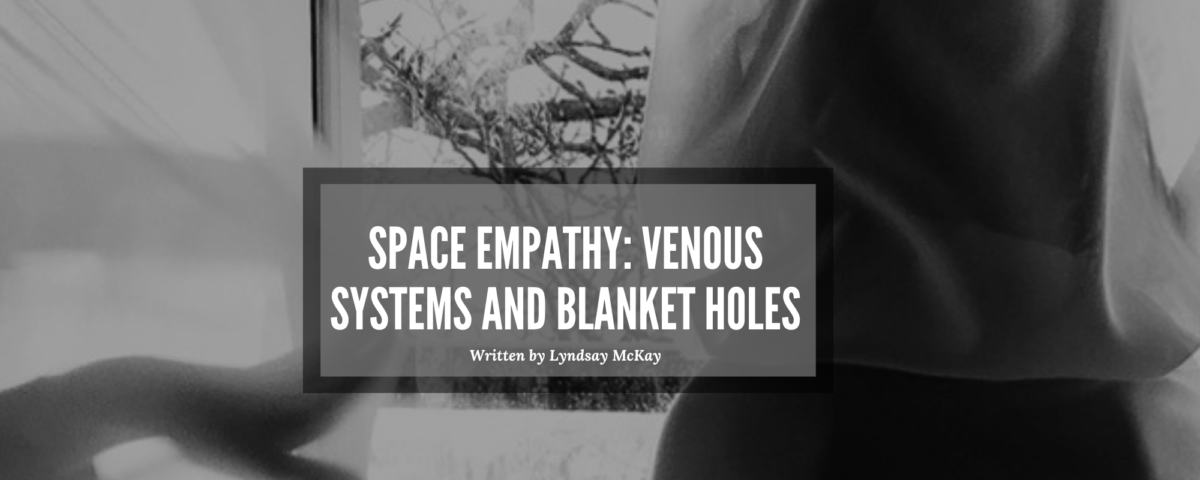Space Empathy: Venous Systems and Blanket Holes
Written by: Lyndsay McKay
This past summer, with the support of a Research Assistant Travel Funding grant, provided by Incubator Art Lab, I had an opportunity to focus on aspects of my art practice which incorporated creative writing and photographic documentation. The quieter pause felt something like a rite of passage - one that brought me closer to home, to myself and my kids and which has since informed other areas of my work in meaningful ways. The journey took me on small expeditions, which provided an intimate exploration of various geographical regions on Vancouver Island, British Columbia. In addition, the funding enabled an extension of time for me to concentrate on studio work in Windsor, Ontario. Throughout the months of June, July, and August, I found myself wandering – most often with my four kids, Emma (Luna), Sophia, Jonathan, and Molly. We sported backpacks and bathing suits, carried peanut butter sandwiches, and extra water for the dog. During these outings, I found myself meticulously documenting our ephemeral and site-specific interaction on beaches and rivers, across flowery fields and as visitors inside the homes of gracious hosts. My growing archive includes photographs and writings which highlight the generative process in my work with an autoethnographical focus. Themes that develop through this body of work are broad and varied. They include feminism, life, memory, identity and belonging, and in some cases, violence, and trepidation. Throughout the summer, I associated these themes with ideas involving the physical human body, motherhood, nature, and home.

As the lull of summer hummed along and the dog days lingered, a thousand golden suns never seemed to lower themselves over the edge of the horizon. Wildfires grew and smoke filled the air while my kids swam in freshwater pools carved into rock. I can still hear the sounds echoing from this day; the wake of a plastic pizza floatie dragging an empty chip bag, mothers calling babies who had wandered too far, screeching, laughing and the harmonics of background noise – all governed like a flock of birds. Mountain water splashed over bodies in a washing away of sins or salty skin or both. The melody of a cleanse, I guess. I wonder now about how these sounds had influenced my kid’s dancing that day. They seemed to always know the moves. Get up, get down. Get up, get down. They slowed down to watch the clouds at one point, climbing onto a fallen tree branch; both remnants of some kind of recent destruction and reminders of our ever-shifting landscape. These intimate instances became opportunities to study an invisible cord that attaches my children to their landscapes; to examine the rituals that shape their perceptions of the world that is morphing their identities. Exposing the interference that radiates within this kind of wildness, in itself depicts the terrible beauty and the paradoxes that exist within contemporary ways of living. And the song plays on.

In thinking about the perception of a landscape and how a landscape may be individually experienced, I found myself embodying the process of becoming aware. I became curious. I moved around and under and through the spaces I visited. I bushwhacked using observation as my compass. I crawled through windows that seemed to hold a placement between other worlds; like channels and valves – internal, external. I became both the venous system and the blood itself, circulating and shapeshifting, carrying the regard for vitality. I laid low and I hid, I pulled spear grass from my shoelaces and threw it like a broken fingernail. I poked my head up when the coast was clear, or only when I wanted to. I rubbed up against mirrors that reflected back other surfaces. These were surfaces with scars and stains; exaggerated traces which represented a passage of time. Scarring, in this work, became an unavoidable point of confrontation for me. Knowing these marks were there had turned my concentration away from location alone, and toward the acknowledgement and certainty of the existence of a blemished human body.



Looking carefully: the action itself became a reminder of contamination, of decay and forgetting, and misunderstanding. Like dust or darkness, there is a place for certain kinds of observances within the omnipresent boundary between the seen and the unseen. With this in mind, I became familiar with existences that had been swept to the edges, settled into cracks, or that were sitting unprovoked. These observations became like sidewalk fissures or hydro poles - walking past them required such little effort from me, but still, they led me toward the margins of awareness. Rhythmic and reliable - they became a part of a broader rulebook that quietly governed my ways of seeing: they were important if you thought about them, but not if you didn’t.


My work reached for evidence of how differently we might find ourselves settling into places; how individually we conceptualize our ideas of comfort and belonging. Along the way, I encountered environments I had only known through maps and other digital avenues. They were direct indications of landscapes built via fractal geometry and not much more. However, after reaching these destinations, I noticed all the holes among the walls - openings that resembled the weave of a crocheted blanket, with all its paradoxical points of security. I saw how pieces of concrete fell from the ceiling when the house shook. I could hear it land before it settled into corners. In these moments, I felt a sense of authenticity emanating through the practice of becoming hypervigilant. Drawing lines to my work and process, there was a certain forgiveness that liberated me from being held firmly in place. Somehow frameless and uninterrupted, these openings represented gateways to other rooms – as well as an option to stand on the threshold of them in order to attend to my senses.

Rooted in empathy, I began to domesticate these spaces – a dollhouse, a blue dot, a red pin, and a grid – through acts of preservation. I began to memorialize these landscapes as I stood in place. And while my kids played hopscotch along foundations, I meditated on the history of this playground. I ran my hands along its sturdy spine. I drew my name in the sand with a stick I found. I sutured and bandaged and kept the field sterile. By combining my approaches and mediums, I set out to capture the meaning of experiencing space and all its accessories. Thinking about analogical interconnectivity and how individual - how different - the experience of time and place can be, there was a rare form of peace found with the ability to raise my head and look around. To be conscious of the causes and effects of personal determination and how diversely we respond to universal forces, it is difficult not to take note of such circumstances. I find it curious that we may not immediately understand what will become memorable. Breathing though curtains, the smell of basement wallpaper, the feeling of satin between my fingers, my thumb in my mouth. These moments still circulate, torn like roof shingles in a tornado before they settle, gently in place, at my feet.

Image Credit: Lyndsay McKay, Untitled, Digital Prints, 2017-2022.


